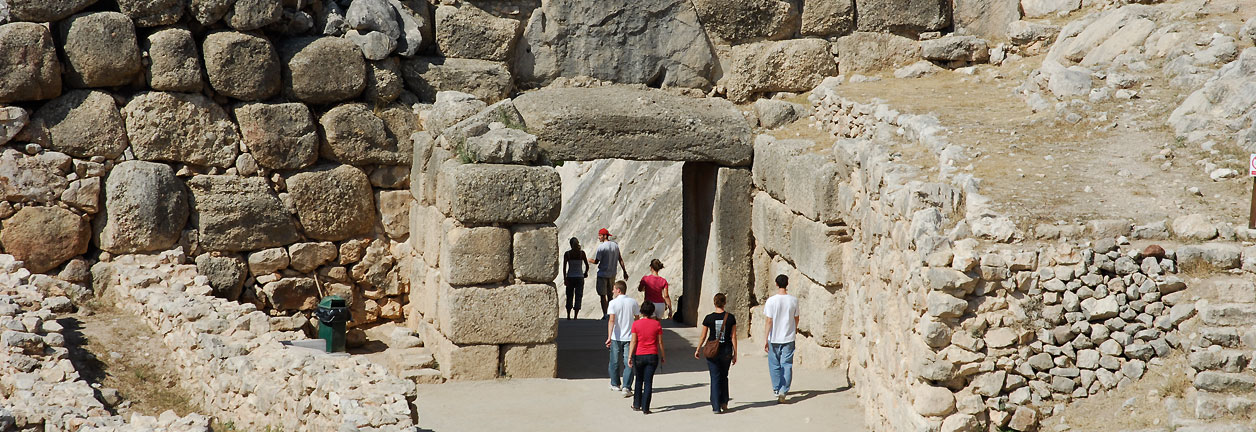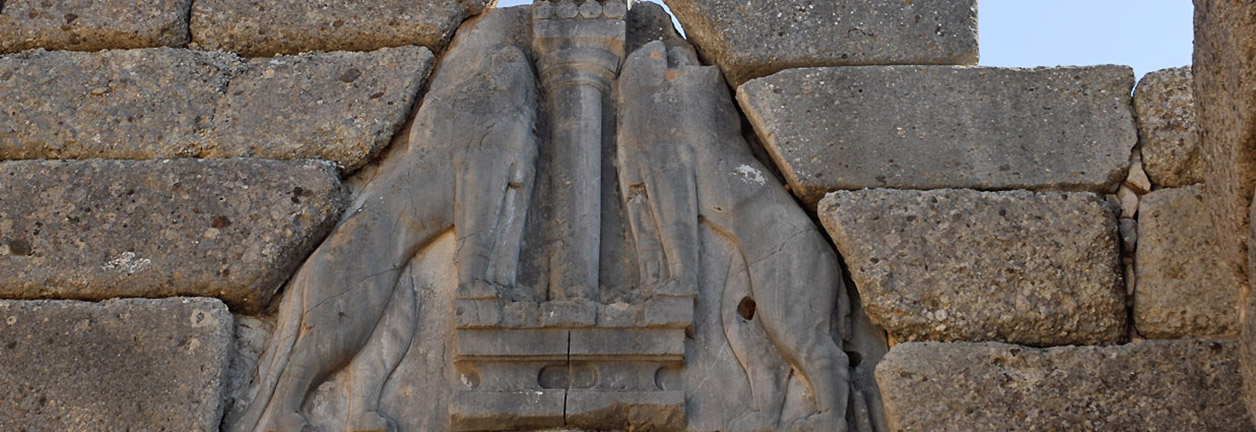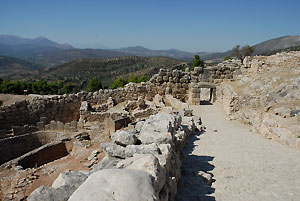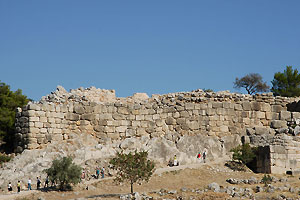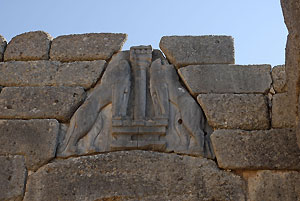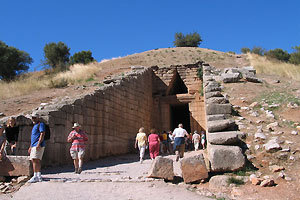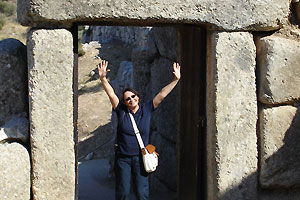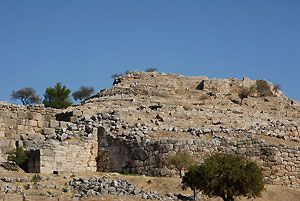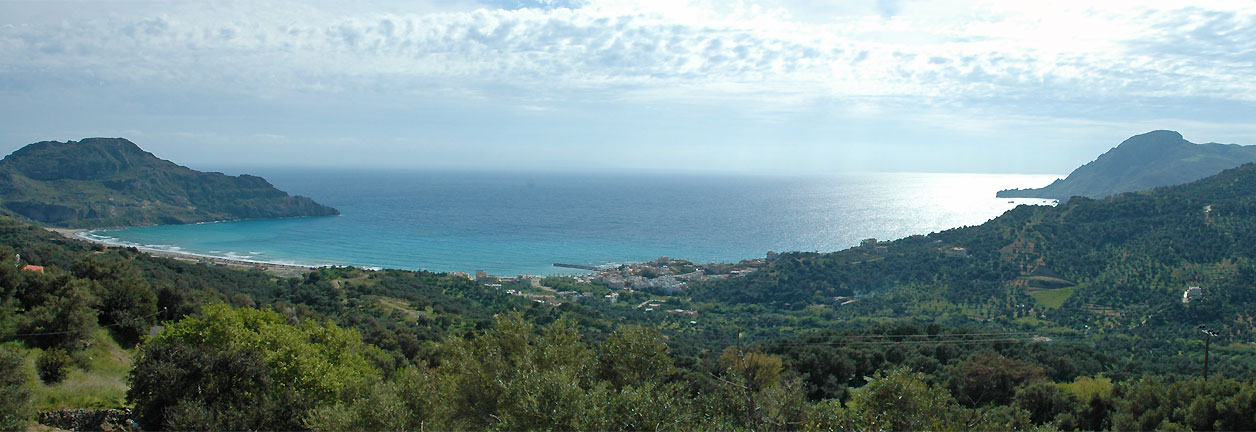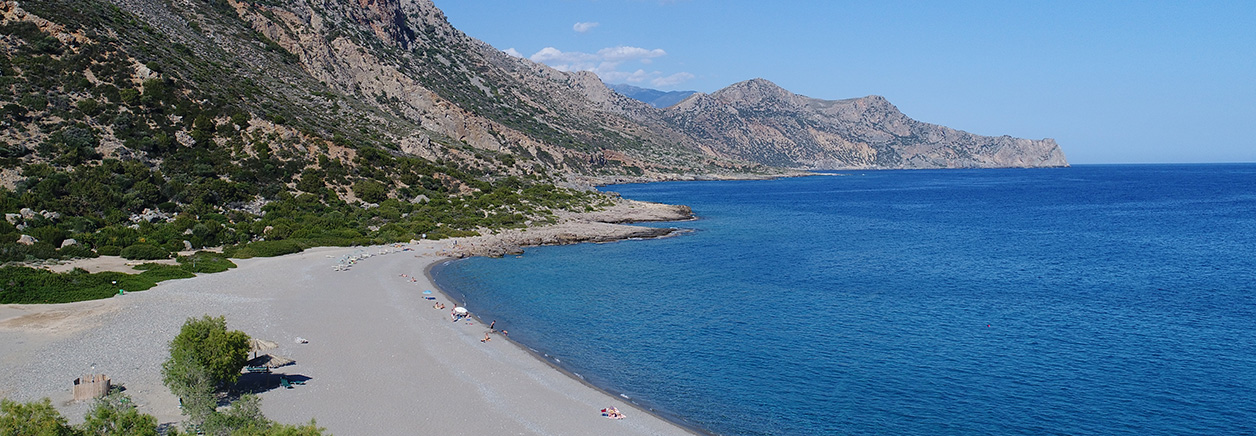Mykene: Expert-Advice & Booking by kreta.com the travel experts for Greece
Mycenae is about 20 km in the inland south of Corinth and 20 km north of Nafplion (Nauplia), also exactly halfway between Corinth and Nafplion (Nauplia).
Mycenae is a ruined castle from the 14th century BC. This castle ruin was hidden for 2000 years until Heinrich Schliemann made the great discovery: golden masks, weapons, cups and jewelry are the most valuable finds that can now be admired in the National Museum of Athens. In contrast to the gigantic, massive walls and minimalist sculptures of the castle, the jewelry and ceramics of the Mycenaeans appear very elegant and fine. Mycenae has been a UNESCO World Heritage Site since 1999. It has been found from the finds that there were relationships with Crete. The shaft tombs are similar to the Minoan tombs. The Mycenaeans imported goods and handicrafts from Crete. At the main entrance of the castle hill you pass the famous lion gate to the treasury. It is believed that the two lions at the entrance to the castle symbolize the sign of power. It is one of the earliest European monumental sculptures. The heads of the lions are missing, it is believed that they were made of metal.
The masonry consists of large blocks and looks very geometric and minimalistic. Schliemann discovers the royal tombs behind the gate. To the north of the gate, you can reach the palace via the northern stairs. Through a porch with columns, west of the palace courtyard, one comes to the Megaron. The water was channeled through the clay pipes from the source over the entire castle. In the castle you can visit the shaft tombs and some dome tombs, the warriors' quarters, the utility rooms, the sign where signs are made of ivory, the house of the oil trader with the large oil vessels and the largest dome tomb of the Mycenaean of the treasury of Atreus from the 13th century . v. The dome tomb is 13.5 m high and the vault has a diameter of 15 m, a masterpiece at that time. The Mycenaean builders build the largest supporting rooms in the ancient world in front of the Roman pantheon. The lion gate and the dome tomb "Treasury of Atreus" were built in the same year.
Who were the Mycenaeans?
First high culture of mainland Europe (1700-1200 BC) strongly influenced by the Minoan culture of Crete and Egypt. The Mycenaeans conquered the Eastern Aegean and Crete in the Middle Mycenean period (1500-1200 BC). During this time, the Greek syllabary emerged from the Cretan script. The Mycenaeans developed into a trading people and exported ceramics to North Africa and the Mediterranean region. However, they were repeatedly attacked by the peoples of Asia Minor. Therefore, the centers are built in protected regions (Mycenae, Tyrens). The writing culture of the early Greek script died out with the destruction of all Mycenaean centers around 1190 BC. The decline of this high culture is as mysterious as the decline of the Minoan high culture of Crete. Mycenae should be on every list of a sightseeing program.
Take advantage of our Peloponnese Round-Trip to get more out of your vacation in Greece.
Pleae send us an request with your details so that we can send you a personalized offer for a peloponnese roundtrip.
We work with professional managers, to ensure higher quality and reliability,
Trip-Ideas:
City-Break Athens and laid-back holidays on Crete, a perfect Combination for unforgettable & eventful holidays in Greece.
We are offering this combination including domestic flights and car hire in Crete, or airport-transfers and excursions. Explore the capital of Greece with its 3400 years old history and the quaint western of Crete with the most scenic nature reserves your hotel is in the wonderful picturesque old town of Rethymnon only a walking distance to the beach. We do everything for your summer happiness to live your dreams in Greece! info@kreta.com... continue



